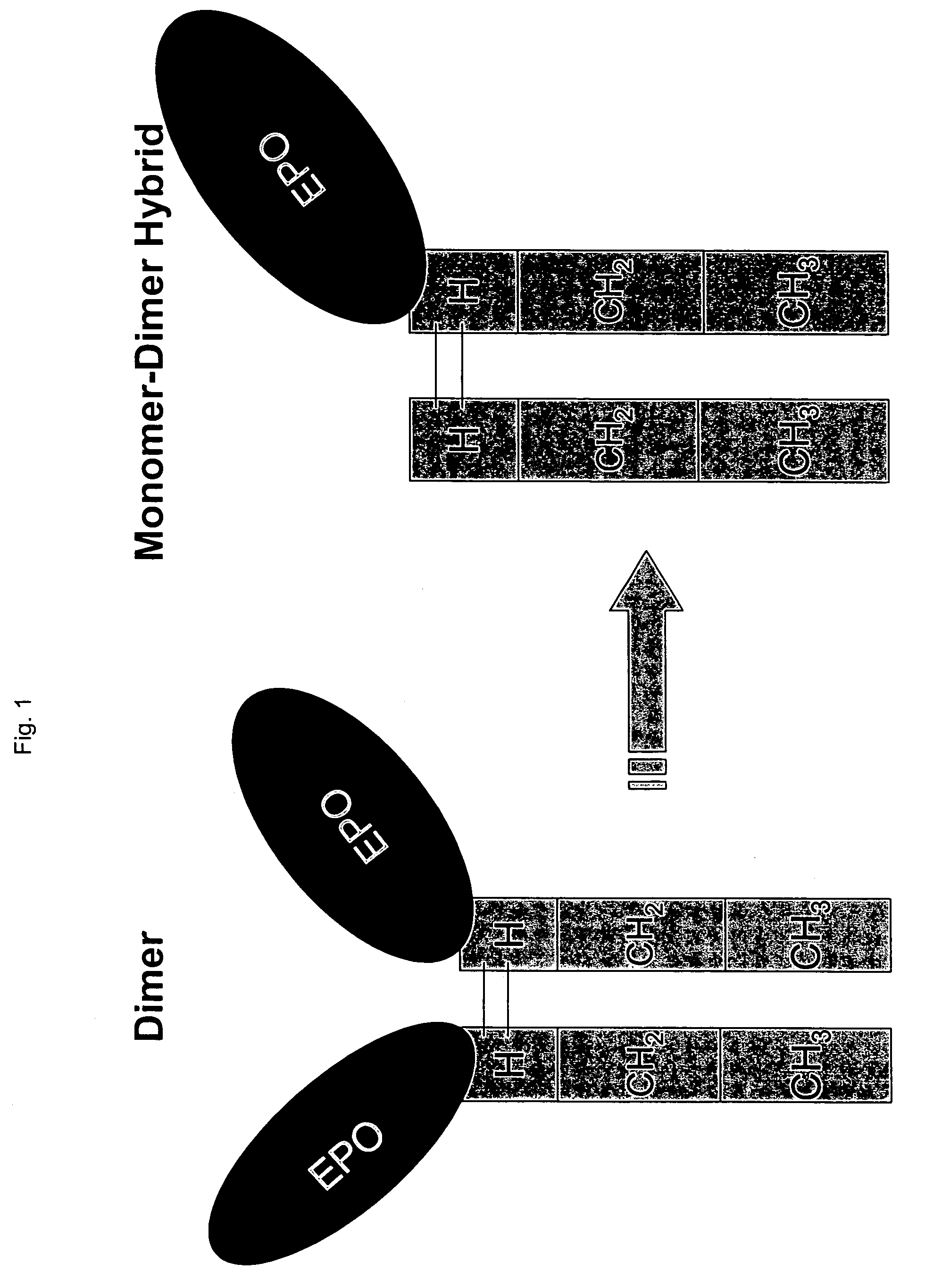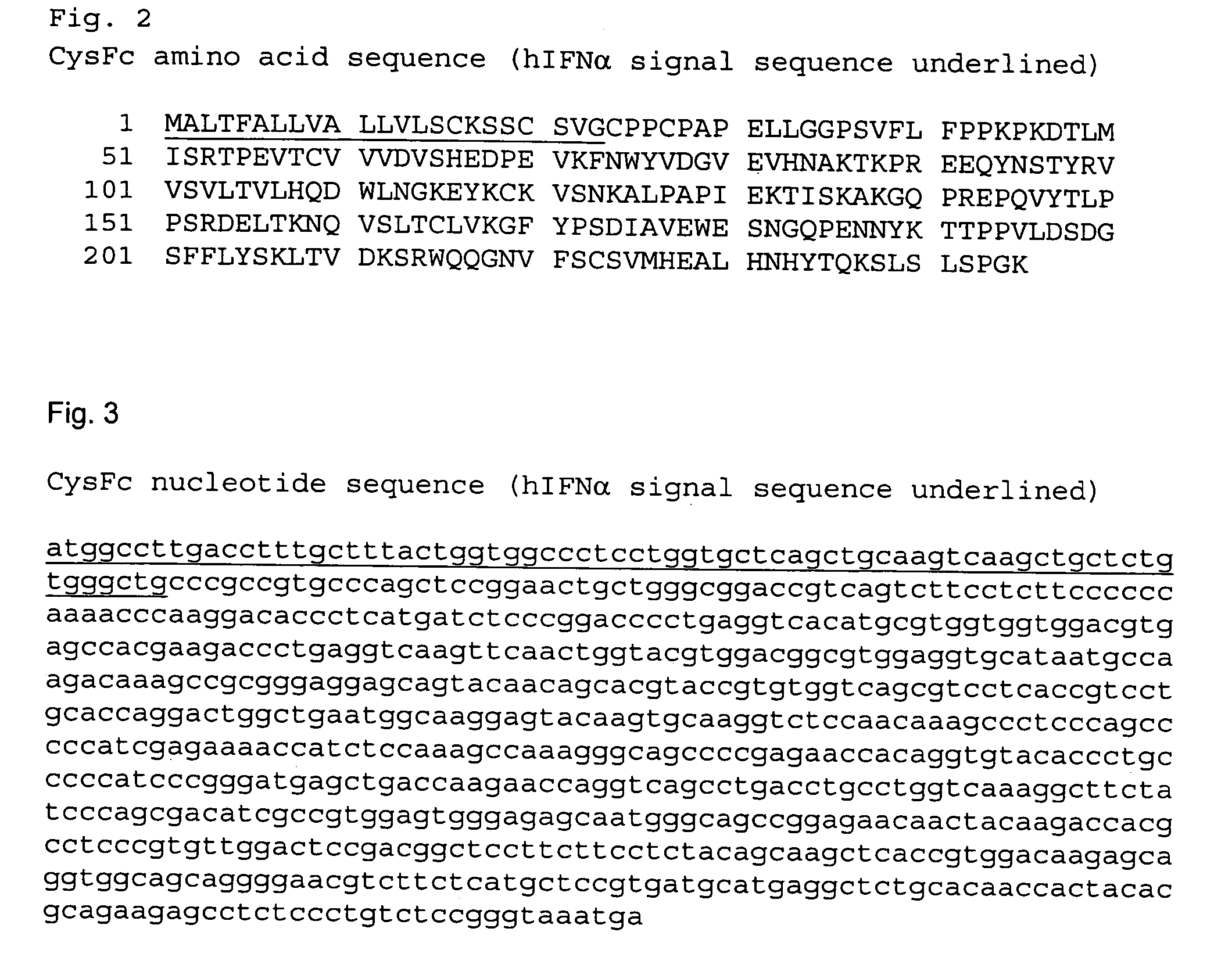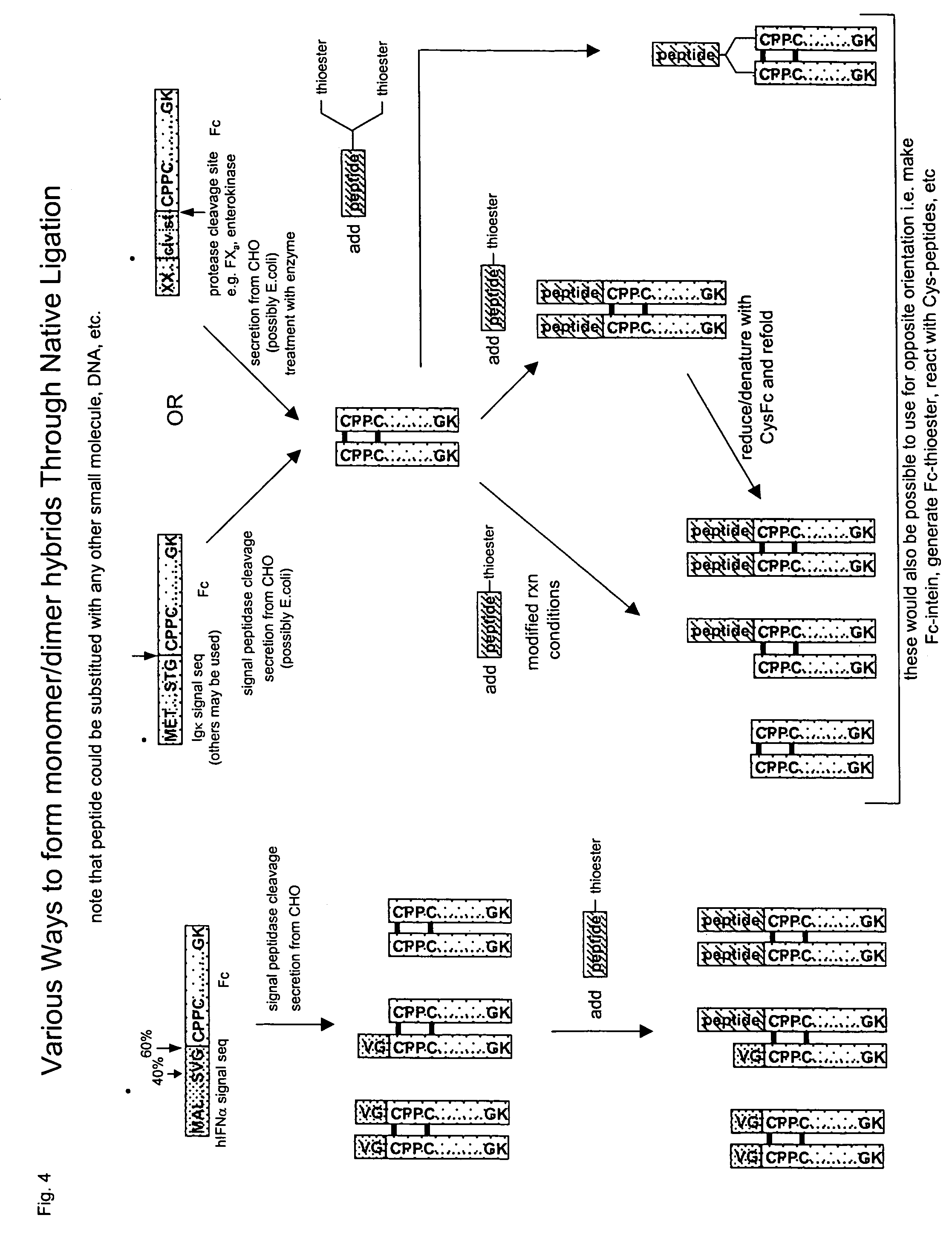Methods for chemically synthesizing immunoglobulin chimeric proteins
a technology of immunoglobulin and chimeric proteins, which is applied in the field of chimeric proteins, can solve the problems of heterogeneous products requiring extensive purification, large multi-domain proteins that are difficult to express recombinantly, and inability to meet the requirements of recombinant expression
- Summary
- Abstract
- Description
- Claims
- Application Information
AI Technical Summary
Benefits of technology
Problems solved by technology
Method used
Image
Examples
example 1
Molecular Weight Affects FcRn Mediated Trancytosis
[0240]Chimeric proteins comprised of various proteins of interest and IgG Fc were recombinantly produced (Sambrook et al. Molecular Cloning: A Laboratory Manual, 2 ed., Cold Spring Harbor Laboratory Press, (1989)) or in the case of contactin-Fc, MAB-β-gal, (a complex of a monoclonal antibody bound to β-gal) (Biodesign International, Saco, Me.) and MAB-GH (a complex of monoclonal antibody and growth hormone)(Research Diagnostics, Inc. Flanders, N.J.) were purchased commercially. Briefly, the genes encoding the protein of interest were cloned by PCR, and then sub-cloned into an Fc fusion expression plasmid. The plasmids were transfected into DG44 CHO cells and stable transfectants were selected and amplified with methotrexate. The chimeric protein homodimers were purified over a protein A column. The proteins tested included interferon α, growth hormone, erythropoietin, follicle stimulating hormone, Factor IX, beta-galactosidase, conta...
example 2
Protein Expression and Preparation of Fc-MESNA
[0242]The coding sequence for Fc (the constant region of human IgG1) was obtained by PCR amplification from an Fc-containing plasmid using standard conditions and reagents, following the manufacturer's recommended procedure to subclone the Fc coding sequence NdeI / SapI. Briefly, the primers 5′- GTGGTCATA TGGGCATTGAAGGCAGAGGCGCCGCTGCGGTCG -3′(SEQ ID NO:16) and 5′-GGTGGTTGC TCTTCCGCAAAAACCCGGAGACAGGGAGAGACTCTTCTGCG -3′ (SEQ ID NO:17) were used to amplify the Fc sequence from 500 ng of the plasmid pED.dC.Epo-Fc using Expand High Fidelity System (Boehringer Mannheim, Basel Switzerland) in a RapidGylcler thermocycler (Idaho Technology Salt Lake City, Utah), denaturing at 95° C. for 2 minutes followed by 18 cycles of 95° C. for 0 sec, 55° C. for 0 sec, and 72° C. for 1 minute with a slope of 4, followed by 72° C. extension for 10 minutes. The PCR product was subcloned into an intermediate cloning vector and sequenced fully, and then subcloned u...
example 3
Synthesis of a Small Molecule Linked to Cys-Fc
[0243]A VLA4 anatagonist described in Lin et al., 1999 J. Med. Chem., 42:920 was linked to CysFc.
[0244]
[0245]In this case, the carboxy-protected version 1 was used and reacted the free amine with 6-aminoheptanoic acid using standard amide bond coupling conditions.
[0246]Removal of the Fmoc groups with DBU in DMF with the polystyrene-bound mercaptoethylamine gave compound 2. Coupling of N,N-bis(N-Fmoc-3-amino-propyl) glycine 3 to compound 2 in the presence of PyBOP and DIEA gave compound 4. Deprotection of the Fmoc groups again with DBU in DMF with the polystyrene-bound mercaptoethylamine, followed by coupling of thioester 5 gave compound 6. Removal of the t-butyl protecting groups gave double thioester 7 which included the active small molecule (FIG. 6). The double thioester 7 was coupled to CysFc and was shown to be attached to both N-terminal Cys residues by running a reducing SDS page gel and observing that the Fc was running at the mo...
PUM
| Property | Measurement | Unit |
|---|---|---|
| temperature | aaaaa | aaaaa |
| temperature | aaaaa | aaaaa |
| pH | aaaaa | aaaaa |
Abstract
Description
Claims
Application Information
 Login to View More
Login to View More - R&D
- Intellectual Property
- Life Sciences
- Materials
- Tech Scout
- Unparalleled Data Quality
- Higher Quality Content
- 60% Fewer Hallucinations
Browse by: Latest US Patents, China's latest patents, Technical Efficacy Thesaurus, Application Domain, Technology Topic, Popular Technical Reports.
© 2025 PatSnap. All rights reserved.Legal|Privacy policy|Modern Slavery Act Transparency Statement|Sitemap|About US| Contact US: help@patsnap.com



